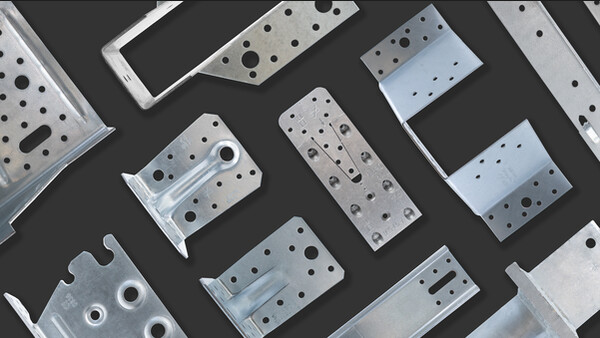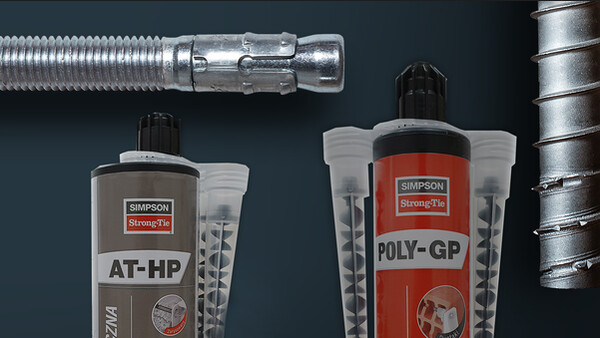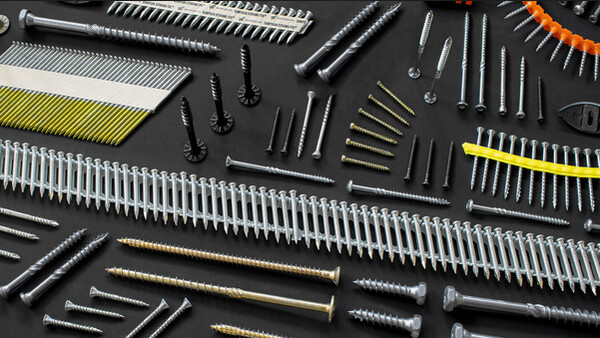General Notes
The file below provides general information for the installer and can also be found in the Connectors for Masonry and Timber Catalogue.
These notes are provided to ensure proper installation of Simpson Strong-Tie® products and must be followed fully.
Simpson Strong-Tie® reserves the right to change specifications, designs and models without notice. .
Steel used for each Simpson Strong-Tie® product is individually selected based on the product’s steel specifications, including strength, thickness, formability, finish, and can be welded. Contact factory for steel information on specific products.
- Unless otherwise noted, dimensions are in millimeters (mm) and loads are in kilo Newtons (kN).
- Unless otherwise noted, product performances are for use with C16 (SC3) timber. Products assessed in the USA were evaluated with Spruce-Pine-Fir timber.
- Unless otherwise noted, bending steel on site may cause fractures at the bend line. Fractured steel will not carry the load and must be replaced. Products designed for bending at time of installation should only be bent once.
- A fastener that splits timber will not take the design load. Evaluate splits to determine if the connection will perform as required. Dry wood may split more easily and should be evaluated as required. If wood tends to split, consider pre-drilling holes with diameters not exceeding 75% of the nail diameter.
- Take wood shrinkage into account when designing and installing connections. Simpson Strong-Tie® manufactures products to fit common dry timber dimensions. If you require a connector with dimensions other than those listed, Simpson may be able to vary connector dimensions; contact the factory.
- Top fix hangers may cause unevenness. Possible remedies should be evaluated by a professional and include using a face-fixing hanger or removing material to accommodate the top flange thickness.
- Multiple member timbers must be fastened together to act as one unit to resist the applied load.
- Do not overload. Do not exceed the product performance which would jeopardise the connection.
- Some model configurations may differ from illustrations shown. Contact factory for details.
- Fill all fastener holes with fastener types specified in the tables, unless otherwise noted. When nailing Options are noted, the fasteners must be the correct type and location to obtain full loading.
- Hanger options - some combinations of hanger options have not been evaluated. In some cases, combinations of these options may not be installed. Horizontal loads induced by sloped joists must be resisted by other members in the structural system. A qualified engineeer must always evaluate each connection, including the carried and carrying member limitations, before specifying the product.
Instructions to the Installer
- All specified fasteners must be installed according to the instructions for each connector. Incorrect fastener quantity, size, type, material, or finish may cause the connection to fail.
- Install all specified fasteners before loading the connection.
- Pneumatic or power-actuated fasteners may deflect and injure the operator or others. Nail guns may be used to install connectors, provided the correct number and type of nails are properly installed in the holes provided.
- Guns with hole locators should be used. Follow the manufacturer’s instructions and use appropriate safety equipment.
- Masonry supported connectors must be embedded into correct strength mortar as per British Standard.
- Hangers into masonry walls must have the minimum specified height of masonry above the hanger, with the mortar fully cured, before load is applied. Top fix masonry hangers will not carry the design load without specified masonry above the top flange of the hanger. The exception to this would be the use of the Safety Fast range of products. Safety Fast hangers allows construction work to continue safely just 3 days after the supporting block work has been laid. Protruding nails should always be clinched to avoid injury.
Instructions to the Designer
Characteristic capacities specified in this catalogue are based on C16 timber grades unless otherwise specified and are presented for use with Limit State Design methods in accordance with Eurocode 5.
- The Safe Working Loads (SWL) shown in the Simpson Strong-Tie® publications for the United Kingdom are derived from tests, calculations and assessments performed in the UK and the USA.
- Safe Working Loads (SWL) are presented for use in permissible stress design in accordance with BS 5268: Part 2: 2002 for Service Classes 1 and 2.
- Loads from Germany were in accordance to DIN design criteria and testing required for Zulassung certification by the Institute für Bautechnique.
- Some products in this catalogue are designed, tested and evaluated in accordance with U.S. industry standards including: National Design.
- Wood shear is not considered in the loads given; reduce allowable loads when wood shear is limiting.
- Simpson Strong-Tie® strongly recommends the following addition to construction drawings and specifications: Substitutions for Simpson Strong-Tie® products must be pre-approved in writing by the designer’.
- Verify that the dimensions of the supporting members are sufficient to receive the specified fasteners.
- Some catalogue illustrations show connections that could cause cross grain tension or bending of timber if not sufficiently reinforced.
- Timber connectors showing the CE mark have been assessed in accordance with Eurocode 5. European Technical Approvals (ETA's) have been obtained and are available on request.
Corrosion Resistance
Connectors are steel and will corrode and lose load-carrying capacity if exposed to ocean salt air, corrosive fire-retardant chemicals, fertilizers, or other substances that adversely affect steel. In corrosive environments, especially for connectors that are not exposed to rain or periodic washing, deterioration will occur at a faster rate. The service life of galvanised connectors in a temperate marine environment can be greatly improved by homeowner maintenance. Fasteners of comparable material should be used to install the product.
Pressure-preservative treated and fire-retardant wood can be caustic to zinc coated (or galvanised) steel. Galvanised connectors should not be placed in contact with treated wood that has not been properly air-seasoned or properly kiln dried. See material supplier for specific recommendations.



